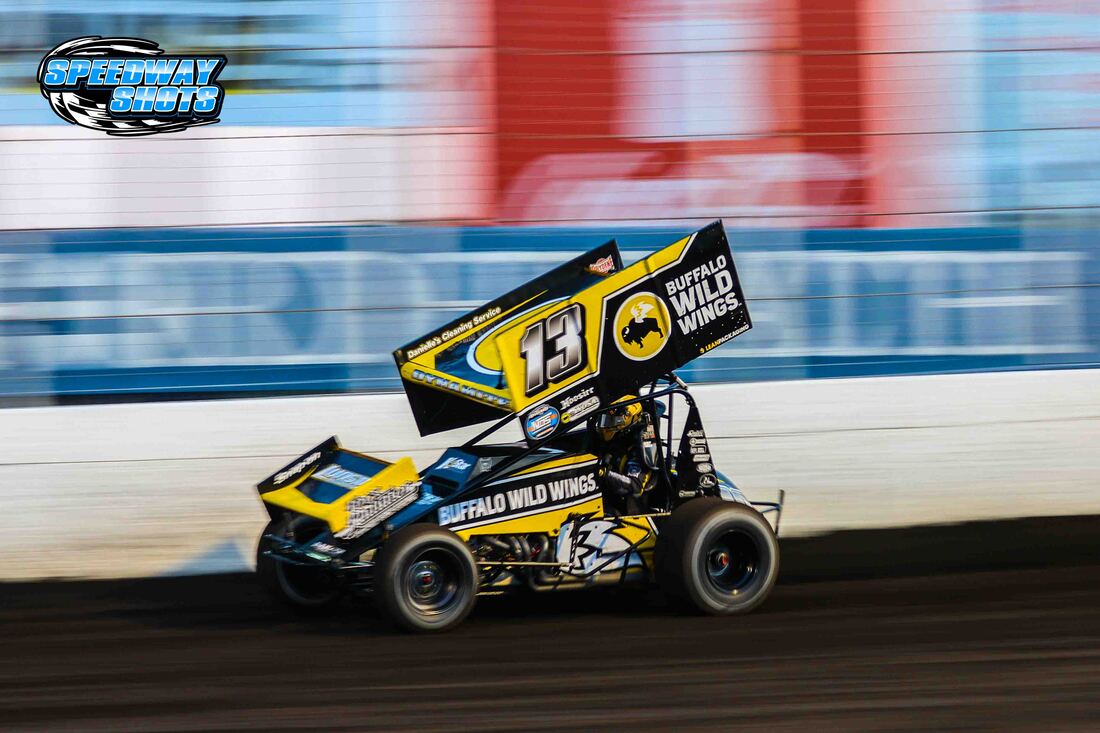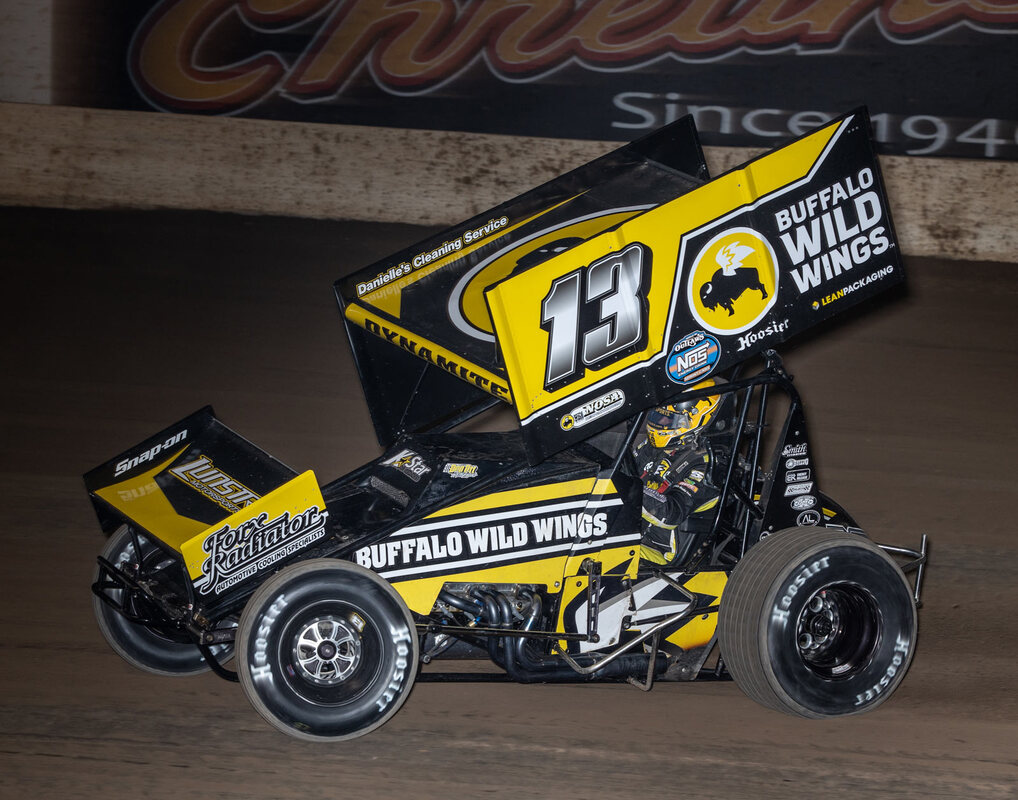Mark Dobmeier's Accident: An In-Depth Analysis
Mark Dobmeier's Accident - An In-Depth Overview
Mark Dobmeier's accident, a tragic event that occurred on the racetrack, has left an enduring impact on the world of motorsports. As a defining moment in racing history, it highlights the dangers associated with high-speed competition and the importance of safety measures. This comprehensive article delves into the details surrounding Dobmeier's accident, exploring its causes, consequences, and the lessons learned from this pivotal event.
Mark Dobmeier's Accident - Key Aspects
Understanding the various aspects surrounding Mark Dobmeier's accident is crucial for gaining a comprehensive perspective on this significant event in motorsports history.
Read also:Debapriya Tanvi Paul Nude Debunking Myths And Understanding The Truth
- Causes: Identifying the factors that led to the accident
- Consequences: Exploring the immediate and long-term impacts of the event
- Safety Measures: Examining the role of safety protocols in preventing or mitigating such accidents
- Racing Regulations: Analyzing the existing regulations and their effectiveness in ensuring driver safety
- Technological Advancements: Discussing the impact of technological advancements on safety features in racing
- Driver Training: Highlighting the importance of proper training and preparation for racers
- Track Design: Exploring the influence of track design and layout on safety
- Medical Response: Evaluating the efficiency of medical response and emergency services at the track
- Media Coverage: Examining the role of media in reporting and shaping the narrative around the accident
- Public Perception: Analyzing the impact of the accident on public perception of motorsports
A thorough examination of these aspects provides a deeper understanding of the complexities and implications associated with Mark Dobmeier's accident, ultimately contributing to safer racing practices and a greater appreciation for the risks and challenges involved in this thrilling sport.
Causes
Analyzing the factors responsible for Mark Dobmeier's accident is vital for preventing similar incidents in the future. By understanding the root causes, we can develop more effective safety measures and improve overall racing conditions.
- Vehicle Malfunction
Mechanical failures or defects in the car can significantly increase the risk of accidents. Regular inspections and maintenance are crucial to ensure that all vehicle components are functioning properly.
- Driver Error
Human error is often a contributing factor in racing accidents. Factors such as fatigue, poor judgment, or lack of experience can impair a driver's decision-making and reaction time.
- Track Conditions
The condition of the track can greatly influence safety. Factors such as slippery surfaces, debris, or poor visibility can increase the likelihood of accidents.
- Environmental Factors
Weather conditions, such as rain or fog, can reduce visibility and traction, making it more difficult for drivers to maintain control of their vehicles.
Read also:
- Rachel True Nude Unveiling The Truth Behind The Headlines
Investigating the causes of Mark Dobmeier's accident highlights the complex interplay of factors that can contribute to such incidents. By addressing these causes through improved safety protocols, driver training, and track design, we can work towards minimizing the risks associated with motorsports.
Consequences
Delving into the consequences of Mark Dobmeier's accident provides valuable insights into the profound and lasting effects of such events. These consequences extend beyond the immediate aftermath, shaping the lives of those directly involved and leaving a lasting legacy on the sport of motor racing.
- Physical Injuries
Racing accidents can result in severe physical injuries, ranging from broken bones to traumatic brain injuries. These injuries can have a profound impact on the driver's health, career, and overall well-being.
- Emotional Trauma
The psychological impact of a racing accident can be significant. Drivers may experience post-traumatic stress disorder, anxiety, or depression. Coping with these emotional challenges requires specialized support and professional guidance.
- Financial Burden
Racing accidents can lead to substantial financial burdens for drivers and their families. Medical expenses, rehabilitation costs, and lost income can create significant financial strain.
- Impact on Motorsport
High-profile accidents can have a wider impact on the sport of motor racing. They can lead to increased scrutiny, rule changes, and safety improvements. These changes aim to enhance safety and prevent similar accidents in the future.
The consequences of Mark Dobmeier's accident serve as a stark reminder of the inherent risks associated with motorsports. Understanding these consequences is crucial for developing more effective safety measures, supporting drivers, and ensuring the long-term sustainability of the sport.
Safety Measures
Safety measures play a critical role in preventing or mitigating accidents like the one involving Mark Dobmeier. By establishing clear protocols and implementing stringent regulations, organizers and governing bodies aim to minimize risks and enhance the safety of drivers and spectators.
One crucial aspect of safety measures is vehicle design and engineering. Implementing rigorous standards for car construction, including the use of advanced materials and safety features, helps protect drivers in the event of a crash. Additionally, track design and layout are carefully considered to reduce potential hazards and provide ample runoff areas.
Furthermore, driver training and certification programs are essential in fostering a culture of safety. Educating drivers on proper techniques, risk assessment, and emergency procedures empowers them to make informed decisions and respond effectively to dangerous situations.
Understanding the connection between safety measures and Mark Dobmeier's accident allows us to identify areas for improvement and develop more comprehensive strategies to prevent similar incidents. By prioritizing safety, we honor the legacy of those impacted by accidents and work towards a future where motorsports can be enjoyed with minimized risks.Racing Regulations
The tragic accident involving Mark Dobmeier underscores the critical importance of racing regulations in ensuring driver safety. These regulations serve as a framework for establishing safety standards, governing track conditions, and defining driver conduct on the racecourse.
A thorough analysis of racing regulations reveals their direct connection to Mark Dobmeier's accident. For instance, regulations governing vehicle specifications and safety features aim to minimize the risk of mechanical failures or malfunctions that could lead to accidents. Similarly, track design regulations, such as the inclusion of runoff areas and impact-absorbing barriers, are intended to mitigate the severity of crashes.
Furthermore, driver regulations, including training and certification requirements, play a vital role in promoting safe driving practices. By ensuring that drivers possess the necessary skills and knowledge, regulations help reduce the likelihood of human error contributing to accidents.
Understanding the connection between racing regulations and Mark Dobmeier's accident allows us to recognize the crucial role they play in preventing or mitigating such incidents. By constantly reviewing and updating these regulations based on evolving safety concerns and technological advancements, we can strive to create a safer environment for drivers and enhance the overall safety of motorsports.
Technological Advancements
Technological advancements have played a pivotal role in enhancing safety features in racing, directly impacting the aftermath of Mark Dobmeier's accident. By incorporating innovative materials and designs, technological advancements aim to mitigate risks and protect drivers in the event of a crash.
- Vehicle Design
Advanced materials, such as carbon fiber, and improved vehicle designs, including enhanced roll cages and impact-absorbing structures, help dissipate energy and protect drivers in high-speed collisions.
- Safety Equipment
Devices such as HANS (Head and Neck Support) devices, fire-resistant suits, and advanced helmets provide crucial protection, reducing the risk of severe injuries to the head, neck, and body.
- Data Acquisition and Analysis
Telemetry systems collect and analyze real-time data, allowing engineers to identify potential issues, optimize vehicle performance, and improve overall safety.
- Track Monitoring
Advanced sensors and surveillance systems monitor track conditions, weather patterns, and driver behavior, providing real-time information that can be used to make informed decisions and adapt safety measures accordingly.
These technological advancements, born out of lessons learned from accidents like Mark Dobmeier's, continue to shape the future of motorsports safety. By embracing innovation and leveraging technology, we can strive to minimize risks, enhance driver protection, and create a safer environment for this thrilling sport.
Driver Training
In the context of exploring Mark Dobmeier's accident and its aftermath, the aspect of driver training emerges as a crucial factor. Proper training and preparation for racers play a pivotal role in enhancing safety and mitigating risks on the racetrack.
- Theoretical Knowledge
Racers must possess a thorough understanding of racing principles, vehicle dynamics, and safety procedures. This knowledge helps them make informed decisions and respond effectively to unexpected situations.
- Practical Experience
Extensive practice on the track is essential for developing the skills and reflexes required for racing. It allows drivers to gain confidence, improve their car control, and learn how to handle different racing conditions.
- Physical Fitness
Racing demands high levels of physical fitness, including endurance, strength, and cardiovascular health. Proper training helps drivers withstand the rigors of racing and maintain optimal performance levels.
- Mental Preparation
Racing requires immense mental focus, resilience, and the ability to manage stress. Psychological training helps drivers develop coping mechanisms, improve decision-making, and enhance their overall mental toughness.
These facets of driver training are interconnected and contribute to creating well-prepared and skilled racers. By emphasizing proper training, we can foster a culture of safety and professionalism in motorsports, reducing the likelihood of accidents and enhancing the overall well-being of drivers.
Track Design
In the realm of motorsports, track design plays a crucial role in enhancing safety and mitigating risks for drivers. The layout and configuration of a racecourse directly impact the likelihood and severity of accidents, as exemplified by the tragic incident involving Mark Dobmeier.
One critical aspect of track design is the inclusion of ample runoff areas. These designated spaces provide drivers with a margin of error in case of oversteering or loss of control, reducing the risk of high-impact collisions with barriers or other obstacles. Mark Dobmeier's accident serves as a grim reminder of the consequences of inadequate runoff areas, as his car veered off the track and struck a concrete wall.
Beyond runoff areas, the overall layout of the track also influences safety. Circuits with excessive high-speed corners or blind spots can increase the probability of accidents. Conversely, well-designed tracks incorporate gradual curves and provide clear visibility, allowing drivers to anticipate hazards and react accordingly.
Understanding the connection between track design and driver safety is paramount in creating a more secure environment for motorsports. By incorporating safety considerations into track design and adhering to international standards, organizers can significantly reduce the risks associated with racing. This understanding not only honors the legacy of drivers like Mark Dobmeier but also contributes to the overall well-being and longevity of the sport.
Medical Response
In the aftermath of Mark Dobmeier's tragic accident, scrutinizing the efficiency of medical response and emergency services at the track is pivotal. Analyzing this aspect provides valuable insights into the preparedness and effectiveness of medical personnel in managing life-threatening situations during motorsports events.
- Response Time
The time taken for emergency responders to reach the accident scene directly influences the severity of injuries and the likelihood of survival. Assessing response times helps identify areas for improvement in dispatch, communication, and on-track logistics.
- Medical Equipment and Personnel
The availability of advanced medical equipment and trained medical personnel at the track is critical. Examining the adequacy of medical resources, including specialized equipment and the expertise of medical staff, ensures prompt and effective treatment at the scene.
- Evacuation Protocols
Established protocols for evacuating injured drivers and transporting them to medical facilities are essential. Evaluating these protocols ensures efficient and safe transportation, minimizing further injuries or complications.
- Communication and Coordination
Effective communication and coordination among medical personnel, race officials, and emergency responders are crucial. Assessing the clarity and efficiency of communication channels helps optimize decision-making and ensures a synchronized response.
By examining these facets of medical response, we gain a deeper understanding of the challenges and successes in providing timely and appropriate medical care at motorsports events. This analysis contributes to enhancing safety measures, improving emergency preparedness, and honoring the legacy of Mark Dobmeier by striving for excellence in medical response on the racetrack.
Media Coverage
The media plays a significant role in shaping public perception and understanding of events, including tragic incidents like Mark Dobmeier's accident. Through their reporting and analysis, media outlets have a profound impact on how the public remembers and interprets such events.
In the case of Mark Dobmeier's accident, media coverage served as a means to inform the public about the incident, its causes, and its aftermath. The media's detailed accounts of the accident, coupled with expert insights and interviews with those involved, provided a comprehensive understanding of the event. This coverage not only satisfied the public's need for information but also helped shape the narrative surrounding the accident, highlighting its significance and raising awareness about safety concerns in motorsports.
Furthermore, the media's reporting extended beyond the immediate aftermath of the accident. In-depth investigations, documentaries, and follow-up stories examined the broader implications of the incident, including its impact on motorsports regulations, safety protocols, and the lives of those affected. This sustained coverage contributed to a deeper understanding of the complexities surrounding Mark Dobmeier's accident and its lasting legacy.
Understanding the connection between media coverage and the public's perception of an event like Mark Dobmeier's accident is crucial for several reasons. First, it underscores the media's responsibility to report accurately and objectively, providing the public with factual information they can rely on. Second, it highlights the power of the media in shaping public opinion and influencing societal discourse. Finally, it emphasizes the importance of media literacy, as the public needs to be able to critically evaluate and interpret media content to form their own informed opinions.Public Perception
The tragic accident involving Mark Dobmeier had a profound impact on public perception of motorsports. The incident sparked widespread discussions about the inherent dangers of the sport, leading to increased scrutiny and questioning of safety measures. The public's perception of motorsports as a risky and potentially life-threatening activity was reinforced by the extensive media coverage surrounding Dobmeier's accident.
Understanding this connection is critical because public perception plays a significant role in shaping the popularity and societal acceptance of motorsports. Negative perceptions can lead to decreased attendance at races, reduced sponsorship opportunities, and increased pressure on governing bodies to implement stricter regulations. Therefore, addressing public concerns about safety is essential for the long-term sustainability of the sport.
Practical applications of this understanding include targeted public relations campaigns aimed at highlighting safety improvements and technological advancements in motorsports. Additionally, increased transparency and accessibility to information about safety protocols can help build trust with the public and address misconceptions about the risks involved.
In conclusion, the connection between public perception and Mark Dobmeier's accident underscores the importance of proactively managing the public's perception of motorsports. By understanding the factors that influence public opinion, stakeholders can develop effective strategies to mitigate negative perceptions and promote a more balanced and informed view of the sport.
This in-depth exploration of Mark Dobmeier's accident has revealed a multifaceted interplay of factors that contributed to the incident and its aftermath. A key takeaway is the crucial role of safety measures, including vehicle design, track layout, and driver training, in mitigating risks and protecting drivers. Another prominent finding is the impact of media coverage in shaping public perception and highlighting the need for responsible and accurate reporting. Finally, the accident underscores the importance of continuous improvement in safety protocols and fostering a culture of safety awareness in motorsports.
The legacy of Mark Dobmeier's accident serves as a reminder of the inherent risks involved in motorsports and the ongoing need for proactive safety measures. It challenges us to strike a balance between pushing the limits of human performance and ensuring the well-being of those who engage in this thrilling sport. As we continue to advance the boundaries of motorsports, let us honor the memory of Mark Dobmeier by prioritizing safety and working relentlessly to create a more secure environment for drivers and fans alike.



